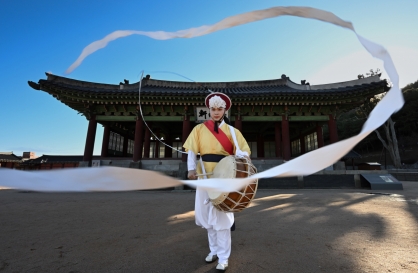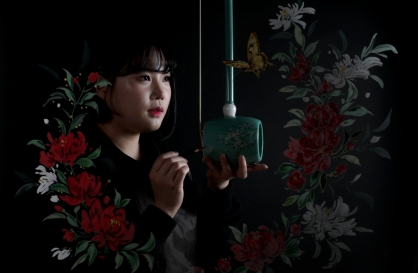Most Popular
Eye Plus
A two-hour drive from Seoul and a long ascent up a steep mountain -- it is only a small price to pay to watch endangered Korean gorals roaming through the lush green grass.
At the site stretching about 200,000 square meters located in Yanggu-gun, Gangwon Province, the Association of Korean Goral Conservation is trying to restore Korean gorals -- a goat-like animal native to Korea.



There, the association is currently raising 26 gorals -- designated as a natural monument No. 217 and grade I endangered species by the government -- to later release them into the wild. Only hundreds of gorals are thought to be living in the wild nationwide.
Gorals typically have brown fur with shades of gray and black. They have short, backward-facing horns. They are called “living fossil” and “animal of fantasy” as their legs are short -- relics of an ancient form.


Gorals used to live across the Korean Peninsula from Mount Baekdu, which straddles the China-North Korea border, to Mount Jiri. But they are now in danger of extinction due to poaching and destruction of their natural habitat.
“As I have observed for more than 10 years, a goral produces a single offspring at a time, defying our belief that gorals give birth to two to three offspring at once,” said Ahn Jae-yong, secretary-general of the association, underscoring the importance of goral conservation efforts.
Photographed by Park Hyun-koo (phko@heraldcorp.com)
Written by Ock Hyun-ju (laeticia.ock@heraldcorp.com)
At the site stretching about 200,000 square meters located in Yanggu-gun, Gangwon Province, the Association of Korean Goral Conservation is trying to restore Korean gorals -- a goat-like animal native to Korea.



There, the association is currently raising 26 gorals -- designated as a natural monument No. 217 and grade I endangered species by the government -- to later release them into the wild. Only hundreds of gorals are thought to be living in the wild nationwide.
Gorals typically have brown fur with shades of gray and black. They have short, backward-facing horns. They are called “living fossil” and “animal of fantasy” as their legs are short -- relics of an ancient form.


Gorals used to live across the Korean Peninsula from Mount Baekdu, which straddles the China-North Korea border, to Mount Jiri. But they are now in danger of extinction due to poaching and destruction of their natural habitat.
“As I have observed for more than 10 years, a goral produces a single offspring at a time, defying our belief that gorals give birth to two to three offspring at once,” said Ahn Jae-yong, secretary-general of the association, underscoring the importance of goral conservation efforts.
Photographed by Park Hyun-koo (phko@heraldcorp.com)
Written by Ock Hyun-ju (laeticia.ock@heraldcorp.com)
-
Articles by Ock Hyun-ju























